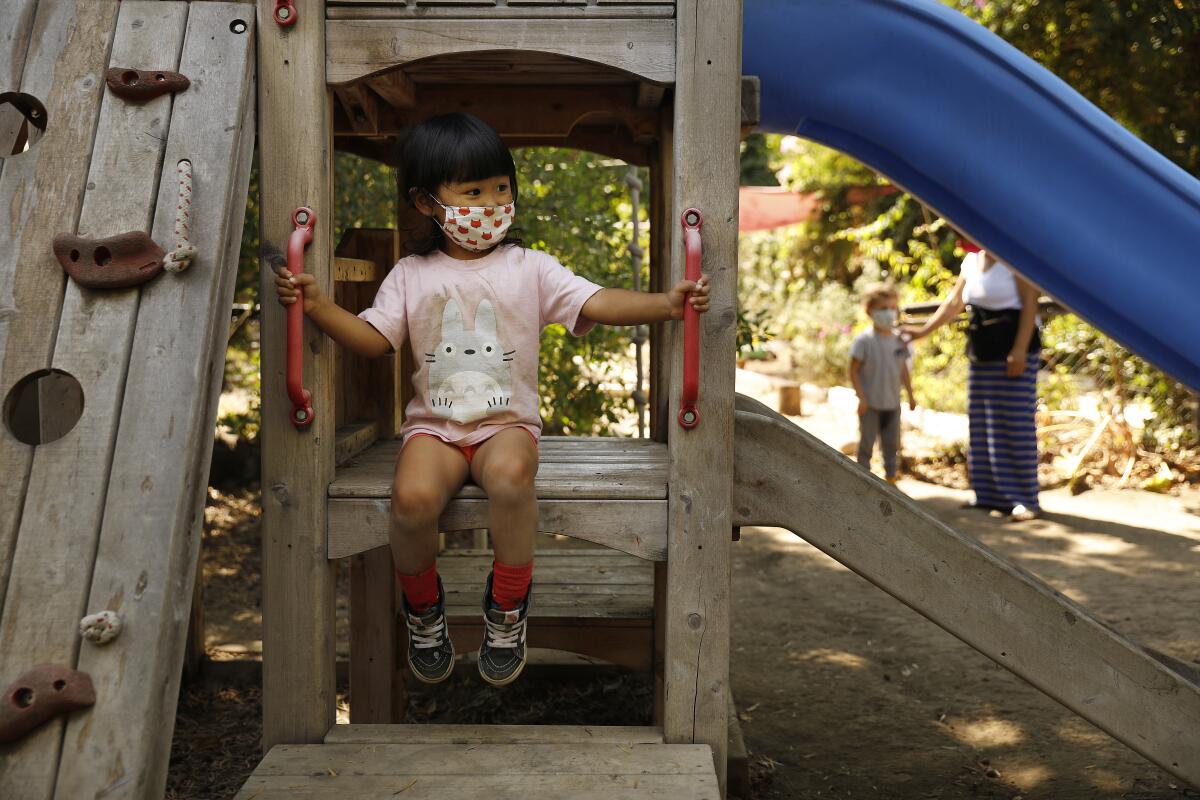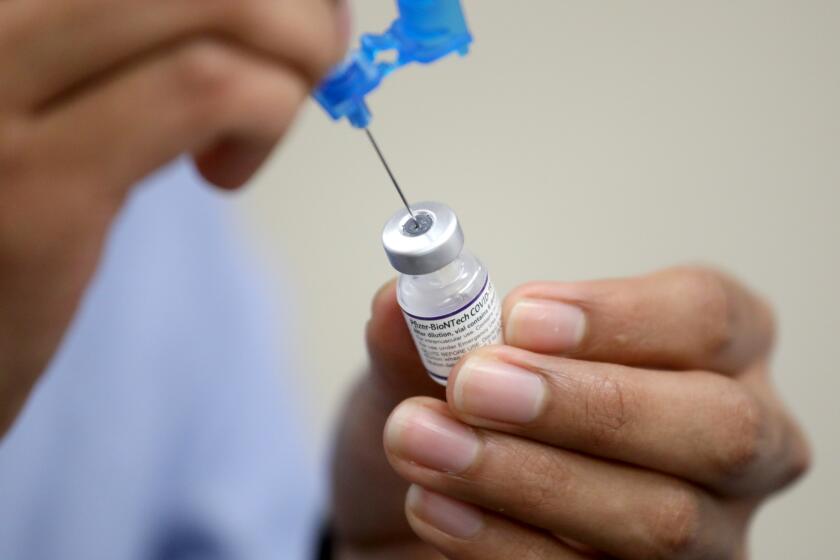When will kids under 5 be able to get vaccinated for COVID-19?

- Share via
Schools around the country are resuming in-person instruction as the highly infectious Omicron variant surges through their communities. Public health officials say COVID-19 vaccines, which are available for children as young as 5 years old, can provide an important layer of protection for kids on campus. But what’s the timeline for approval for children under 5?
Dr. William Hartman, the principal investigator of one of the Moderna pediatric COVID-19 vaccine trials, says it’s reasonable to believe emergency use authorization for children 6 months to 5 years old could be granted in late March or early April. He said it’s “highly possible” Moderna will reach that point before Pfizer does.
Based on the progress he’s observed so far, Hartman, who runs the Hartman Laboratory at the University of Wisconsin, expects initial data within roughly the next month.
In December, Pfizer-BioNTech announced something of a setback in the efforts to expand use of its vaccine: Data from its ongoing trial of children 2 to 4 indicate that the vaccine dosage used — 3 micrograms, or one-tenth of the adult dose — did not produce a potent immune response in that group after two shots. But the two-shot regimen did produce a response — comparable to the one seen in 16-to-25-year-olds — in infants between 6 months and 2 years old. Children 5 to 11 receive a 10-microgram dose, or one-third of the formulation for people 12 and older.
Moderna is conducting trials for the under-5 age group using a comparatively higher dosage that’s about a quarter of the adult dose, Hartman said.
“As far as we can tell,” he said, that two shot-regimen is proving safe and effective in trial participants. He added that they have not observed any incidents of myocarditis, mild cases of which have been rarely observed in adolescents who received the vaccines.
“I believe that that’s held true (in Moderna trials for this age group) nationally, that the myocarditis fear that we all have isn’t looking to be a problem in this age group,” he added.
Pfizer said it plans to test trial subjects’ immune response after administering a third dose.
“The decision to evaluate a third dose of 3 [micrograms] for children 6 months to under 5 years of age reflects the companies’ commitment to carefully select the right dose to maximize the risk-benefit profile. If the three-dose study is successful, Pfizer and BioNTech expect to submit data to regulators to support an Emergency Use Authorization for children 6 months to under 5 years of age in the first half of 2022,” wrote Jerica Pitts, a representative for Pfizer, in an email.
The move could open the way for the very youngest in the country to start receiving shots as early as March.
What about Johnson & Johnson?
An emailed statement from Johnson & Johnson said Phase 2 and 3 clinical trials were underway in adolescents 12 to 17. Meanwhile, the CDC has recommended that most eligible Americans opt for one of the mRNA vaccines instead of the Johnson & Johnson shot.
The winter outlook and safety
Dr. Leian Chen, the lead physician at UCLA Health Pediatrics in Marina del Rey, says she has conversations about vaccination daily.
“I have some families who will very eagerly ask every visit” about when their younger kids might be able to get vaccinated, she said.
Elementary-age children have been eligible for vaccination since early November, when the Centers for Disease Control and Prevention gave emergency use authorization to Pfizer’s vaccine for kids 5 to 11. The American Academy of Pediatrics reported that over 1 in 10 children in the U.S. — nearly 7.9 million — have tested positive for COVID since the start of the pandemic.
But progress has been slow: Since vaccines became available to that age group, the L.A. Times vaccine tracker indicates, only 28% of eligible children have received at least one dose in California — far behind the overall state vaccination rate of 75.4%.
Chen said in December that she expected to see more COVID-19 cases in children as the Omicron wave hit Southern California. That prediction has come true: By the end of the first week of January, cases among Los Angeles Unified School District students and staff were up nearly tenfold compared with before the winter break.
“We’ve seen that kids definitely do get COVID. And fortunately, most are OK,” she said. “But some do get severely ill. And others do have long COVID symptoms.”
She said she regularly fields questions from parents about the long-term safety of these vaccines and reports of side effects such as myocarditis. She has personally reviewed the data, for both her patients and herself. Her 7-year-old became eligible for vaccination along with millions of other children this fall. She decided to get him vaccinated.
The rate of those testing positive in L.A. Unified is the highest of the pandemic. Officials insist schools will be safe.









